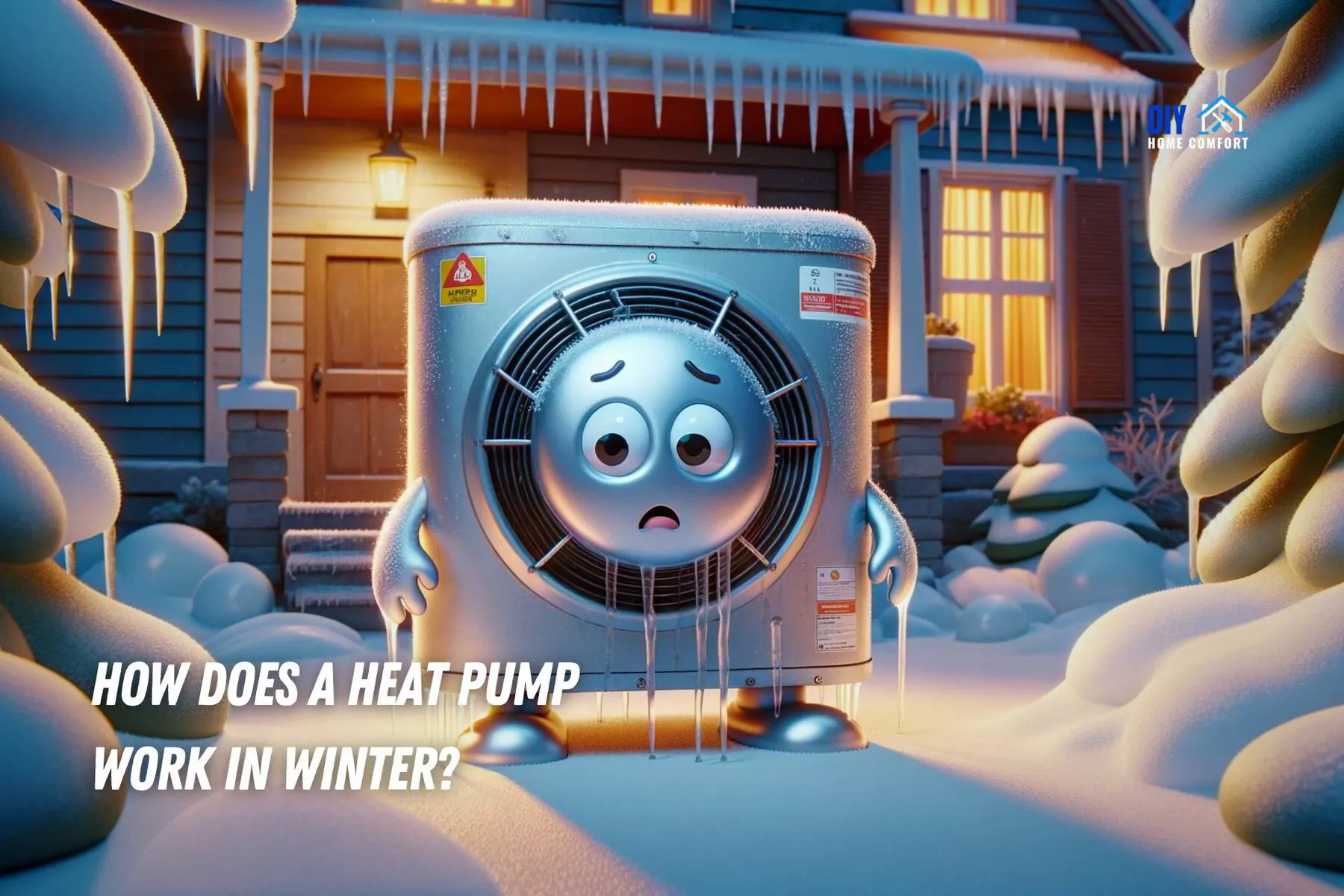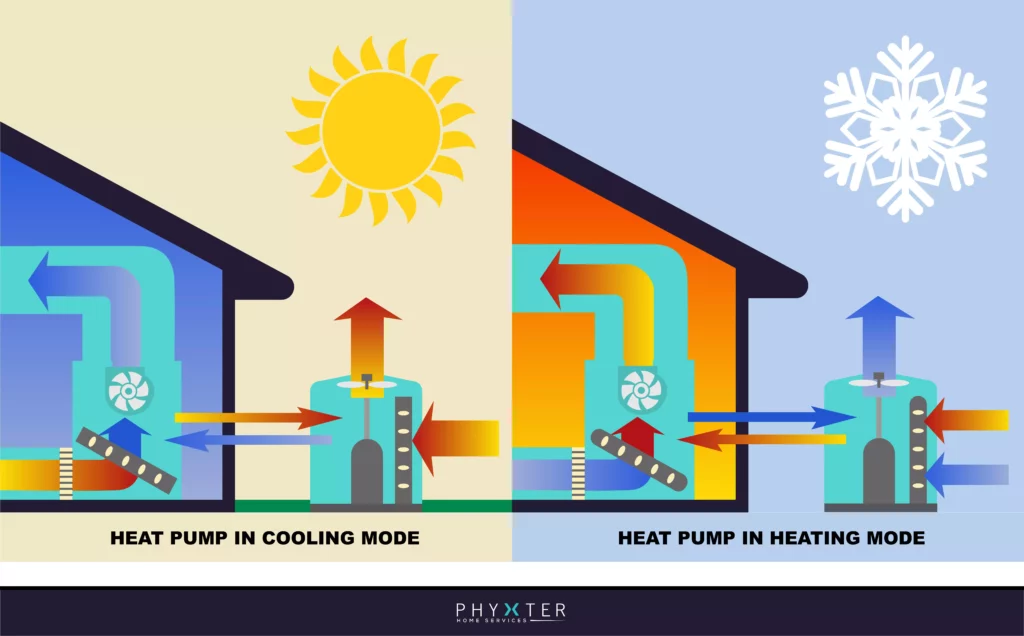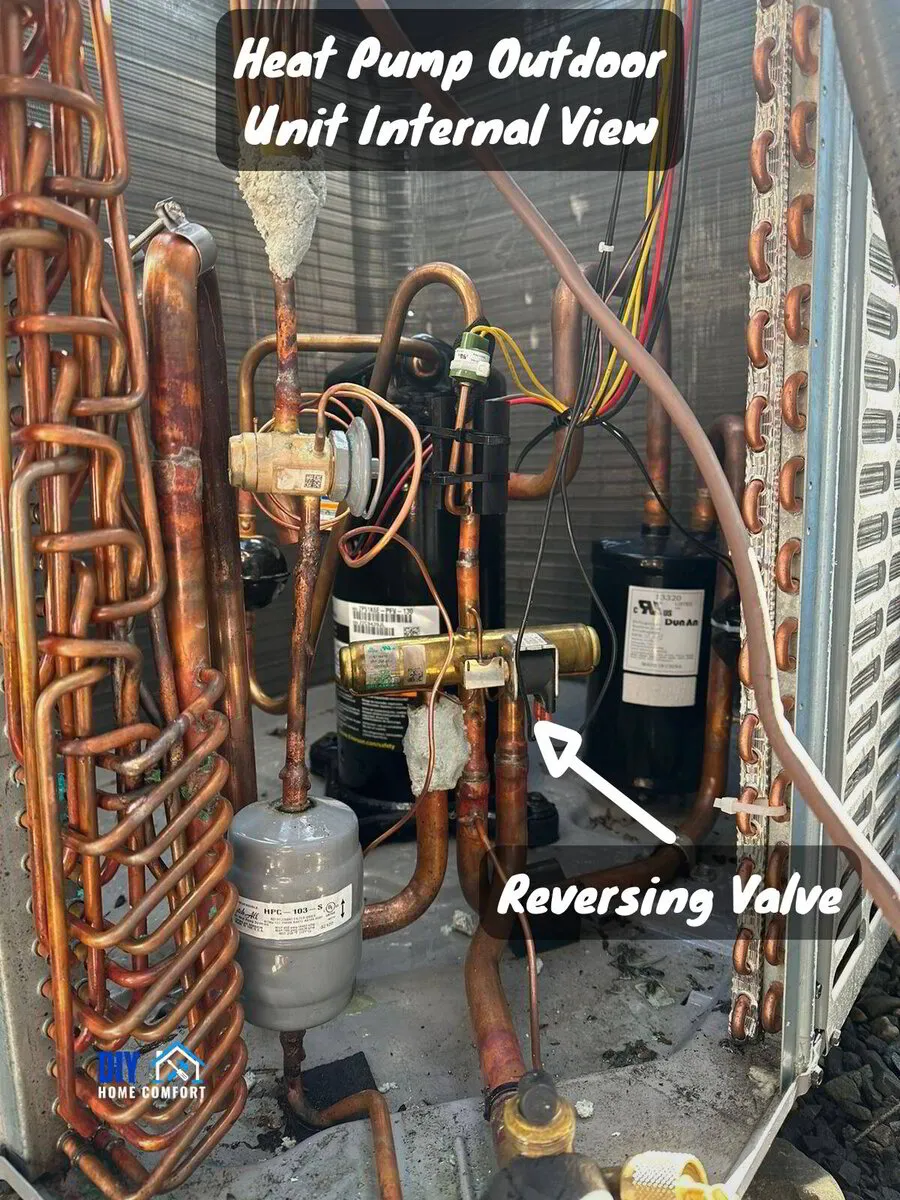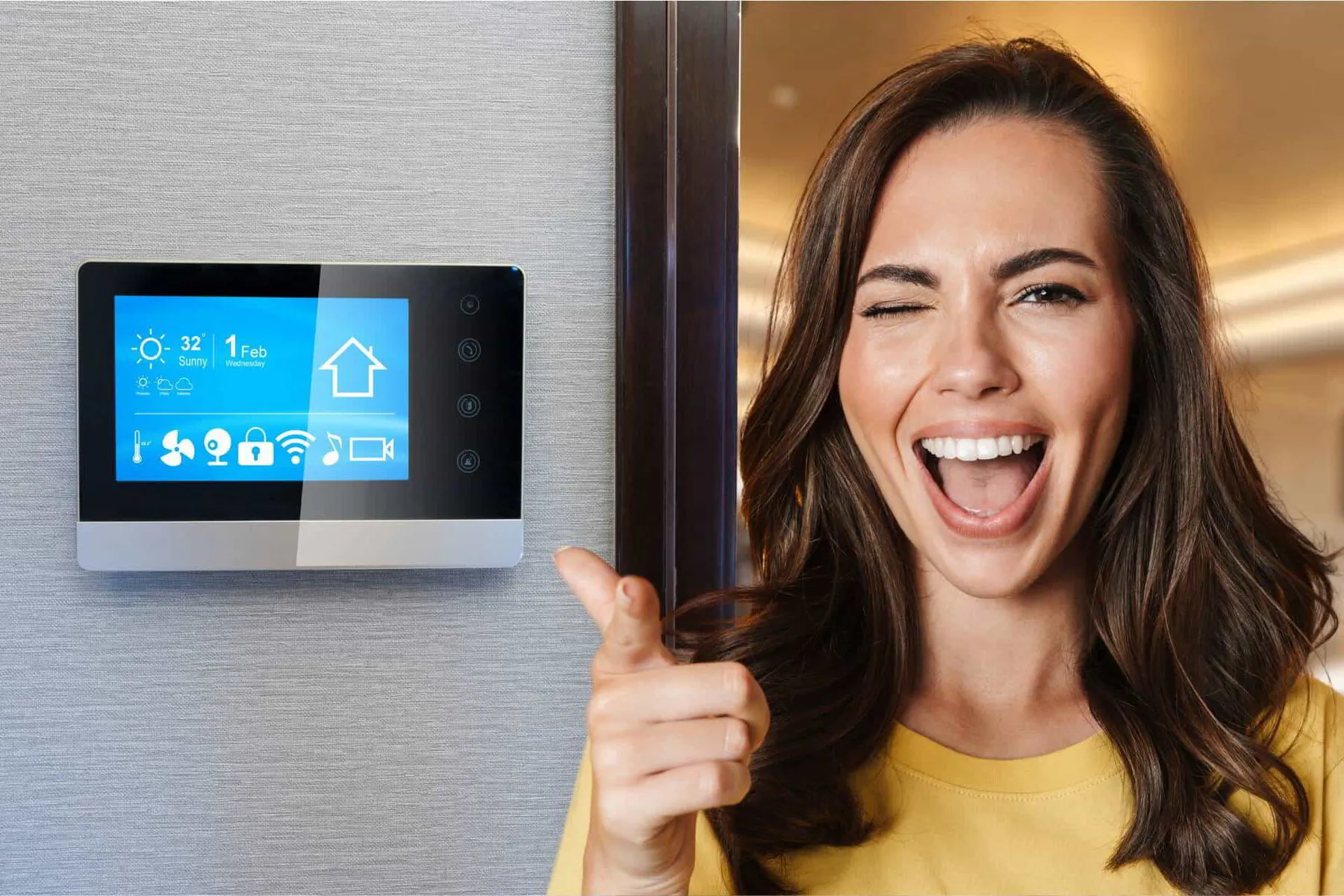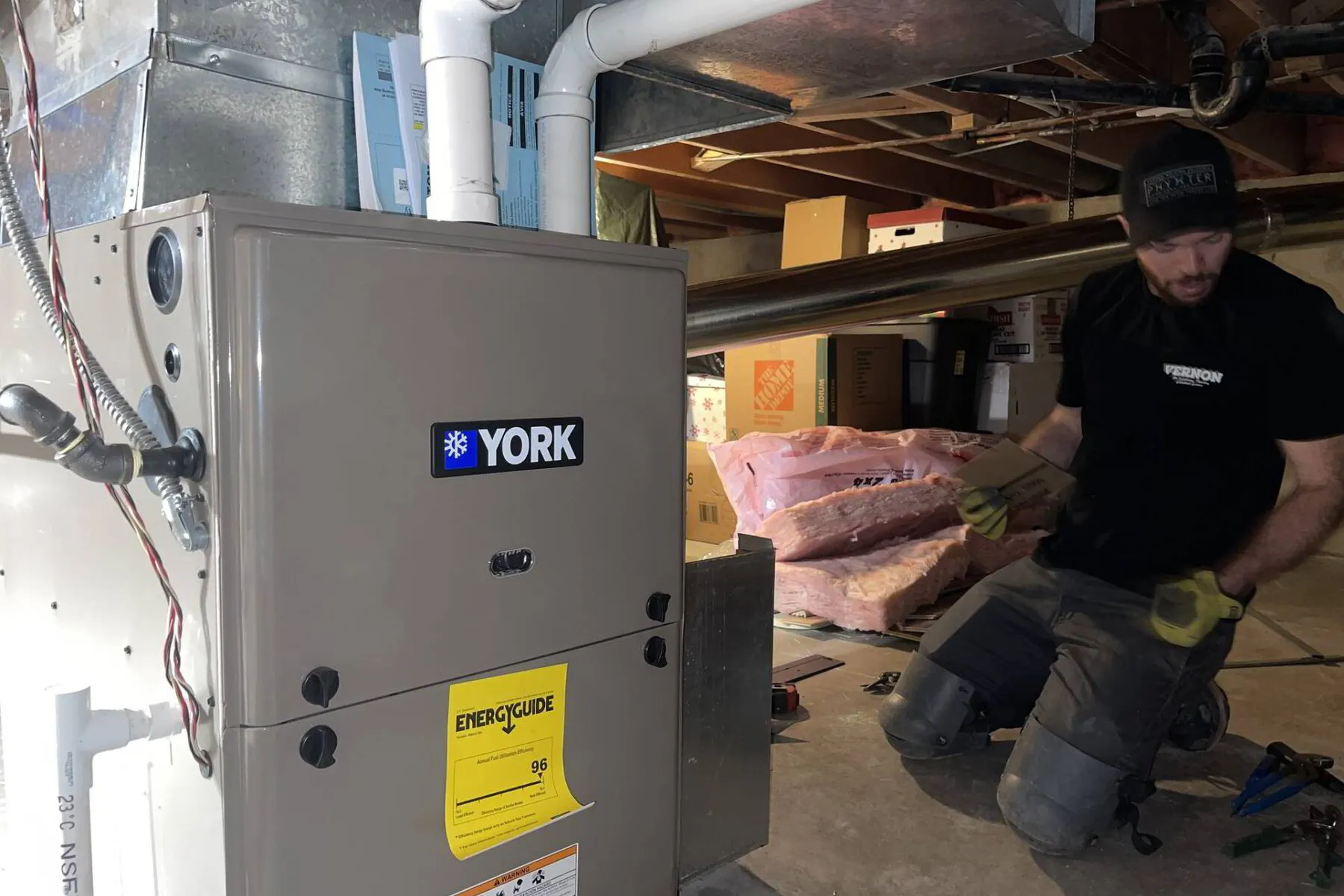In the chilly depths of winter, homeowners often wonder, "How does a heat pump work in winter?" Contrary to popular belief, heat pumps are not just for warm weather; they're versatile systems capable of both heating and cooling your home.
The key lies in their ability to reverse their operation based on the season. Heat pumps perform a seeming paradox during winter: they extract heat from the cold outdoor air.
This process involves an intricate system of refrigerants and compressors, which defy the cold by pulling in whatever heat is available outside and amplifying it to warm your home.
📘 Key Takeaways
- Heat Pumps' Versatility in Winter: Contrary to common belief, heat pumps are effective in both warm and cold conditions, capable of heating homes even in winter by extracting heat from the cold outdoor air.
- Thermodynamic Heat Transfer: Air source heat pumps operate in winter based on the principle of moving heat from colder outdoor air to the warmer indoors, with refrigerants playing a crucial role in this heat absorption and release process.
- Challenges in Extreme Cold: Heat pumps start losing efficiency in extremely cold temperatures, typically below 25 to 30 degrees Fahrenheit, due to the reduced availability of heat in the outdoor air.
- Hybrid Heat Pump Systems: For colder climates, hybrid systems that combine air-source heat pump technology with traditional heating methods offer a more efficient heating solution by switching to conventional furnaces in extreme cold.
- Maintenance and Insulation for Efficiency: Regular maintenance of heat pumps and proper home insulation are key to maximizing their efficiency in winter, alongside modern advancements like variable speed compressors and smart thermostats.
How a Heat Pump Works in Winter
Image courtesy of Phyxter Home Services
The Basic Principle of Heat Transfer
The basic principle of heat transfer in air source heat pumps, particularly during winter, is centered on the thermodynamic process of moving heat from a colder area to a warmer one.
These pumps exploit this principle by extracting heat from the seemingly cold outdoor air. Despite low temperatures, heat energy is still present in the outdoor air. The refrigerant, a crucial component in the heat pump's system, plays a significant role in this process.
As the refrigerant circulates through the air source heat pump's outdoor coils, it absorbs the available heat from the outside air through evaporation, transforming from a low-temperature liquid into a gas. This gaseous refrigerant, now carrying the absorbed heat, is compressed, raising its temperature further.
The heated refrigerant then travels through the indoor coils, where it undergoes condensation, releasing its heat into the indoor air and warming the space.
After releasing its heat, the refrigerant cools down and reverts to a liquid form, returning to the outdoor unit, ready to begin the cycle anew. This continuous cycle enables the air source heat pump to provide warmth even in the chilly conditions of winter.
📘 Related Reading: How Does A Heat Pump Work?
Role of Refrigerants and Reversing Valve
Refrigerants and the reversing valve are crucial in the functionality of heat pumps, allowing them to switch between heating and cooling systems. Refrigerants, typically in a liquid state, have a low boiling point, enabling them to absorb heat efficiently.
When the heat pump is in heating mode, the refrigerant passes through the outdoor coils, absorbing external heat and evaporating into a gas. This gas, carrying the absorbed heat, is then compressed, increasing its temperature.
The reversing valve, a key component in a heat pump, dictates the direction of the refrigerant's flow. In the cooling mode, it directs the refrigerant to absorb heat from inside the building and release it outside.
Conversely, the valve reverses the flow in the heating mode, allowing the refrigerant to collect heat from the outside air and release it indoors. This versatility makes heat pumps an effective solution for heating and cooling, adapting to different seasonal requirements.
Limitations of Heat Pumps in Extreme Cold
Efficiency Drop in Low Temperatures
Heat pumps face efficiency challenges in extremely cold temperatures, typically starting to lose efficiency below 25 to 30 degrees Fahrenheit (-4 to -1C). The primary reason for this drop in efficiency is the diminishing amount of heat available in the outdoor air for the heat pump to extract.
As temperatures plunge, the refrigerant in the heat pump's system struggles to absorb enough thermal energy from the frigid air. This limitation forces the heat pump to work harder to maintain the desired indoor temperature, leading to increased energy consumption and reduced overall efficiency.
In extremely cold conditions, the heat pump may rely on auxiliary heating methods, such as electric resistance heaters (heat strips), to provide sufficient warmth.
This reliance on supplemental heating sources further diminishes the energy efficiency advantage that heat pumps typically offer, especially when compared to traditional heating systems.
Hybrid Heat Pump Systems for Cold Climates
Hybrid heat pump systems offer an effective solution for maintaining efficiency in colder climates. These systems ingeniously combine the technology of air-source heat pumps with traditional heating methods, such as oil and natural gas furnaces.
The heat pump operates as the primary heating source in moderate temperatures, efficiently extracting heat from the outside air.
However, as temperatures drop to extremely low levels, where traditional heat pumps struggle to operate efficiently, the system automatically switches to the conventional gas furnace. This switch ensures consistent heating and optimal energy usage, as furnaces are more effective in generating heat in extreme cold.
By leveraging the strengths of both heat pump and furnace technologies, hybrid systems provide a versatile and energy-efficient heating solution for regions experiencing severe winter conditions.
Maximizing Heat Pump Efficiency in Winter
Importance of Regular Maintenance
Regular maintenance is crucial for ensuring the efficiency of heat pumps, especially in winter.
Homeowners should adopt a proactive approach to upkeep, focusing on several key areas:
Filter Maintenance: Clean or replace filters at least every three months. Clogged filters restrict airflow, reducing efficiency and straining the system.
Outdoor Unit Inspection: Regularly check the outdoor unit for debris, snow, or ice accumulation. Keeping the area around the unit clear ensures optimal airflow and prevents mechanical blockages.
Coil Cleaning: The coils in both indoor and outdoor units should be inspected and cleaned periodically to ensure efficient heat exchange.
Thermostat Check: Ensure the thermostat functions correctly and is set appropriately for the season.
Professional Maintenance Schedule: Schedule a yearly professional maintenance check. Ideally, this should be done before the onset of cold weather in the fall to ensure the heating system is prepared for winter demands.
Adhering to these maintenance tips helps maintain the heat pump's efficiency, prolong its lifespan, and reduce the risk of unexpected breakdowns during the cold months.
Home Insulation and Proper Settings
Home insulation and thermostat settings play a pivotal role in maximizing the efficiency of heat pumps. Proper insulation ensures minimal heat loss, allowing the heat pump to maintain a comfortable indoor temperature more efficiently.
Homeowners should focus on sealing leaks around doors, windows, and any other areas where drafts can occur. Adding insulation in the attic, walls, and floors can significantly improve heat retention, reducing the workload on the heat pump.
Regarding thermostat settings, finding a balance that maintains comfort without overworking the system is essential. A programmable thermostat can be particularly beneficial, allowing for setting consistent temperatures that avoid the inefficiencies of frequent adjustments.
Setting the thermostat to a lower temperature at night or when the house is unoccupied can also yield energy savings. Additionally, avoid cranking up the thermostat suddenly to high temperatures; this does not heat the home faster but can lead to unnecessary energy usage.
Homeowners can significantly improve their heat pump performance by enhancing insulation and optimizing thermostat settings, leading to better heat retention and energy efficiency.
Expert Tips and Innovations
Recent advancements in heat pump technology and innovative strategies can significantly enhance their performance, especially in winter.
Variable Speed Compressors:
Modern heat pumps often feature variable speed compressors, which adjust their speed to match the home's heating requirements. This technology leads to greater efficiency and consistent indoor temperatures, unlike traditional compressors' on/off cycle.
Smart Thermostats and Zoning Systems:
Integrating smart thermostats and zoning systems with your heat pump can lead to more efficient energy use and personalized comfort. Smart thermostats learn your habits and adjust settings accordingly, while zoning systems allow different areas of your home to be heated or cooled to different temperatures.
Solar-assisted Heat Pumps:
Combining solar energy with heat pumps is a growing trend. These hybrid heating systems use solar panels to generate electricity, which can power the heat pump, significantly reducing electricity costs and enhancing environmental sustainability.
Advanced Defrosting Techniques:
Newer cold-climate heat pumps have improved defrosting techniques that reduce energy use during the defrost cycle. Some systems use sensors and advanced algorithms to minimize the duration and frequency of defrost cycles, maintaining efficiency in icy conditions.
Region-specific Design:
Heat pumps are now being designed with specific regions in mind. In colder climates, models with enhanced low-temperature performance are available. These are tailored to maintain efficiency and output in extreme cold.
Use of Eco-friendly Refrigerants:
The shift towards eco-friendly refrigerants reduces the environmental impact of heat pumps. These refrigerants have lower global warming potential (GWP) and are more energy-efficient.
Regularly Updating System Software:
For heat pumps with digital controls, manufacturers often release software updates that can improve functionality and efficiency. Regularly updating your system can ensure optimal performance.
Hybridization with Other Renewable Technologies:
Combining heat pumps with other renewable technologies like geothermal systems or hydrogen storage can create ultra-efficient heating solutions, particularly in regions where air-source heat pumps may be less effective due to extreme cold.
Implementing these advanced tips and staying abreast of new technological developments can significantly enhance the performance of heat pumps, ensuring they remain an efficient and eco-friendly option for home heating, even in challenging winter conditions.
Conclusion to How Does a Heat Pump Work in Winter
In this comprehensive guide, we've explored the intricacies of how heat pumps work in winter, delving into the principles of heat transfer, the critical role of refrigerants and reversing valves, and the challenges faced in low temperatures.
We've also examined hybrid heat pump systems tailored for cold climates and the paramount importance of regular maintenance and proper home insulation for maximizing efficiency. Our insights extend to cutting-edge advancements in heat pump technology, offering unique and practical tips for enhancing performance in winter conditions.
At DIY Home Comfort, our expertise and experience are dedicated to providing you with knowledgeable and high-quality information, helping you understand and optimize your home comfort systems.
We invite you to explore our other articles for more insights and practical tips on home improvement and heating solutions. Stay informed and make the most of your home comfort systems with DIY Home Comfort.
Scott Harding
Scott is the main author of DIY Home Comfort. He's also an experienced HVAC technician that enjoys home renovation and spending time with his family. You can find out more about him here.
